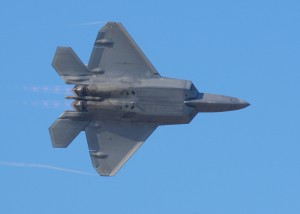 The brilliant scholars at CalPolyTech have diligently evaluated and assessed the Fundamentals of Vibration Measurement and Analysis in a way that even lay persons can get a grip on the fundamentality of measuring vibrations for differing purposes and projects. This reference for comprehending the physics behind the elemental vibration measurement and analysis will prove invaluable to the product managerial departments, industrial engineers, developers, and all with decision making power in the testing or product development field.
The brilliant scholars at CalPolyTech have diligently evaluated and assessed the Fundamentals of Vibration Measurement and Analysis in a way that even lay persons can get a grip on the fundamentality of measuring vibrations for differing purposes and projects. This reference for comprehending the physics behind the elemental vibration measurement and analysis will prove invaluable to the product managerial departments, industrial engineers, developers, and all with decision making power in the testing or product development field.
See Sinusoidal and Random Vibration Testing Primer for a more technical explanation of sinusoidal vibration testing.
See Sinusoidal Vibration Testing to learn more about the different types of sinusoidal vibration testing.
Structural vibration testing and analysis contributes to all of the progress in many industries, including aerospace, automobile manufacturing , tool manufacturing, wood and paper production, power generation, defense, electronics, telecommunications and transportation. The most common application is identification and the suppression of unwanted vibration to improve the quality of the company’s product.
Vibration Analysis
Vibration is divided into three sub-categories of:
- Sinusoidal vs. random vibration, and
- Linear vs. rotation-induced vibration
- Free vs. Forced
Free vibration
Structure reacts to being impacted or displaced. What happens next is completely, absolutely determined by the structure properties, and the vibration understood by examining the mechanical properties. When you strike a guitar string, it vibrates at the tuned frequency and gives you the desired tone. Frequencies of tone is a function of the tension in the instrument’s string, and unrelated to the striking or strumming.
Forced vibration
Forced vibration means the structure’s response to repetitive forcing function causing vibration of the structure at the excitation frequency. Your rear view mirror in an auto always vibrates at the frequency paired with the engine’s RPM. In forced vibration a relationship exists between amplitude of the forcing and the vibration level that corresponds.
Sinusoidal Vibration
This vibration is a special class. The structure excites by the forcing with a pure acceleration and one frequency. Sinusoidal vibration is not common in nature by any means but always provides engineering that permits understanding complex vibrations when broken down into one tone vibration.
The motion of any structure point can be described as a sinusoidal function of Time.
Random Vibration
With this vibration which you always feel when driving a car results from a complex combination of the rough road surface, engine vibration, and outside wind buffeting the car. They are usually described using statistical parameters. Random vibration quantifies the vibration over time across a frequency spectrum.
Vibration Fatigue
Engineers and managers should keep firmly in mind that the term, Vibration, describes the repeating motions which are measured in a structure. Any unwanted vibration causes fatigue and degrades performance of the structure. Metal fatigue in airplanes is a paramount cause of air disasters, and can be avoided with proper and correct maintenance to fight metal fatigue from plane vibrations.
Therefore it is desirable to eliminate or reduce the effects of vibration. In other cases, vibration is unavoidable and even desirable. The goal may be to understand the effects of vibration on the structure’s compounds, to try to control or modify the vibration, or isolating vibration from the structure and minimize the structural response in a disastrous manner.
Structural Vibration
Structural vibration can be very complex. Therefore it is best for the novice to begin with a simple model to gain basic concepts and build up to advanced systems. The simplest vibration model is:
- the single-degree-of-freedom or
- mass-spring-damper model.
It consists of a simple mass suspended by an ideal spring with known stiffness and a dashpot damper from support. A dashpot damper is like an automobile shock absorber and produces an opposing force proportional to the velocity of the mass.
Mass Matters
Imagine for a moment that your choices in configuring the vibration effect on are a bowling ball and an automotive spring. Surely the heavy weight of the sizeable bowling ball would be more resistant than the coiled automotive spring. These two factors will have utmost importance as engineers endeavor to calculate the speed, velocity and resistance factors of the two test objects vs. the vibration strength to which they are subjected in your experiment.
It is important for our engineers, scientists, statisticians and manufacturers of our automobiles to airplanes to possess the educated abilities to assess how a simple vibration in one seemingly insignificant part can cause a disaster of great proportions. Moreover, it explains to the professionals how that insignificant part can become significant and prevent the disaster.